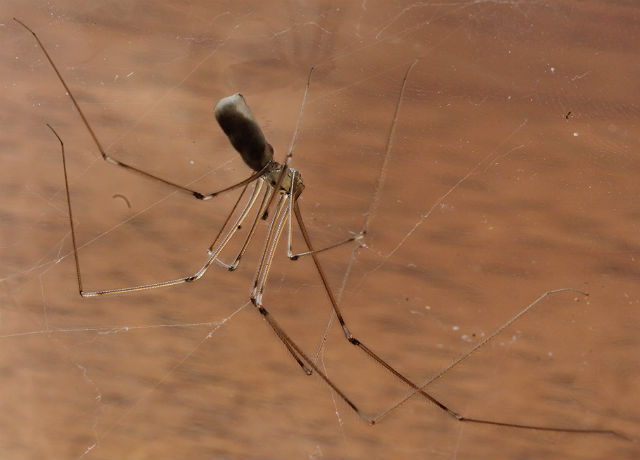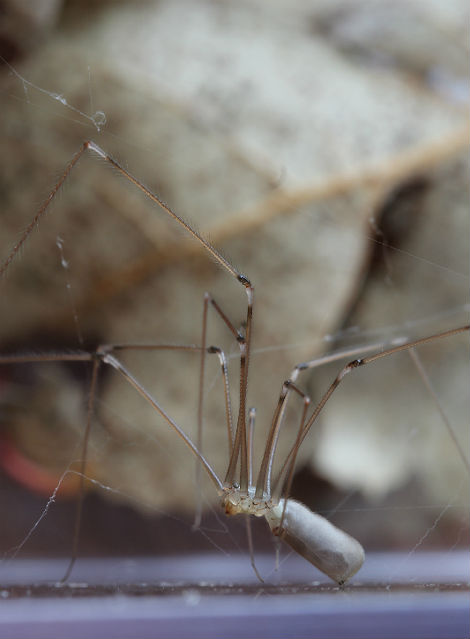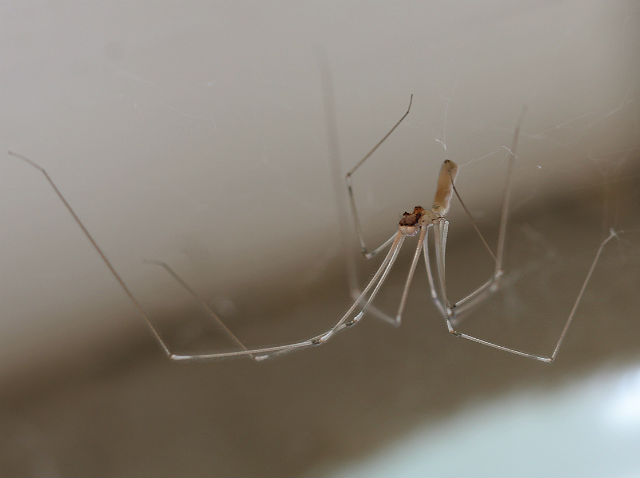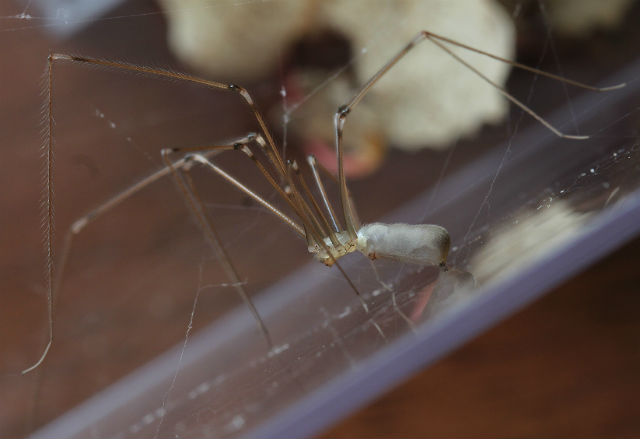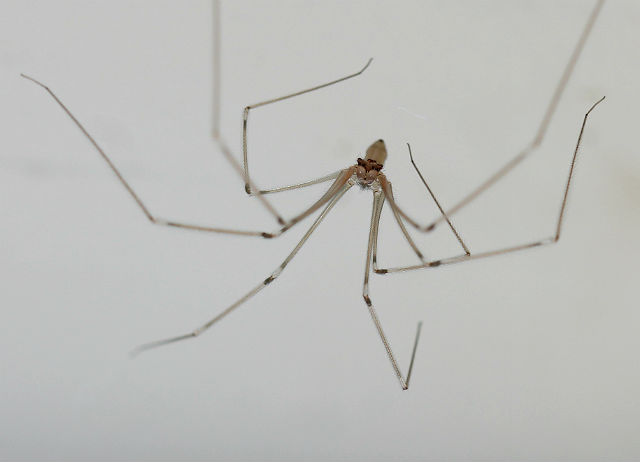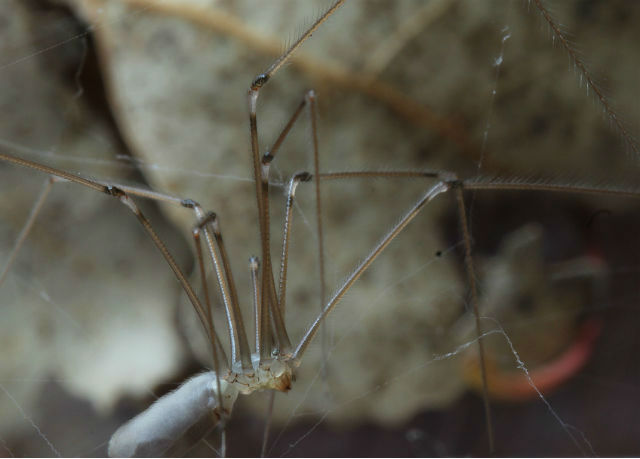Its habit of living on the ceilings of rooms, caves, garages or cellars gives rise to one of the common names for this arachnid. It is easy to identify, because Cellar Spiders typically have extremely long and skinny legs with small bodies. Cellar Spiders are considered beneficial in some parts of the world because they kill and eat other spiders, including species that are venomous to humans.
Originally from the subtropics, they are not native to the United States, but are quite familiar to many. I often encounter them in my basement or garage. They are unable to survive in cold weather and consequently are restricted to (heated) houses in some parts of their range. One species, Pholcus phalangioides, is common in buildings worldwide.
This is the only spider species described by the Swiss entomologist Johann Kaspar Füssli, who first recorded it for science in 1775. Confusion often arises over another one if its common names, because “daddy longlegs” is also applied to an unrelated arthropod – the harvestman.
An unusual behavior of theirs is that these spiders will rapidly vibrate in a circular fashion in their web if threatened, making them difficult to see. Although they look delicate, they can easily catch and eat other spiders (even those much larger than themselves) and insects.
A Cellar Spider doesn’t move around very much; it usually stays in its web. It spends most of its life hanging upside down and waiting for prey. The web is usually a very messy cobweb structure.
When food is scarce, this creature may abandon its web and find the web of another spider. It will then tap on the web, mimicking a trapped insect. When the owner of the web comes to catch its “prey,” the Cellar Spider captures and eats it.

